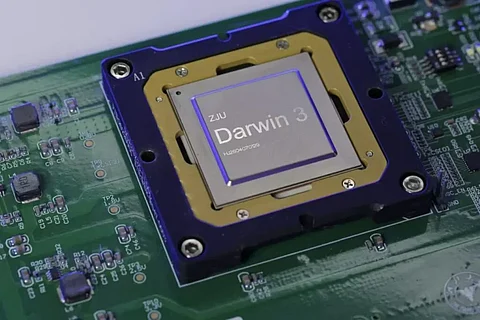

Darwin Monkey is a brain-inspired computer developed by Chinese researchers. Using more than 20 billion artificial intelligence (AI) neurones, the ground-breaking device was created by Zhejiang University and is said to resemble the human brain in both form and function, reported DNA India.
The South China Morning Post (SCMP) said Darwin Monkey runs on 960 Darwin-3 chips, which together generate over 100 billion synapses, the connections that enable neuronal communication. This architecture allows the system to process information with brain-like speed and efficiency.
The machine is also highly energy-efficient, operating on about 2,000 watts, compared to the high power consumption of traditional supercomputers.
Darwin Monkey can solve mathematical and logical problems and is expected to significantly advance AI. Researchers say it can also simulate the brains of mice, zebrafish, and macaque monkeys, opening new avenues in neuroscience. Its applications may extend to fields like data processing, robotics, and medical research.
Darwin Monkey uses neuromorphic computing, a technology that mimics the structure and function of the human brain. It learns, makes decisions, and remembers using spiking neural networks, which are systems that imitate how real neurones fire and communicate.
This is not Zhejiang University’s first such project. In 2020, it introduced the Darwin Mouse, which had 120 million AI neurones. Darwin Monkey, with over 20 billion neurones, a new operating system, and a more advanced neurological framework, is its evolved successor.
